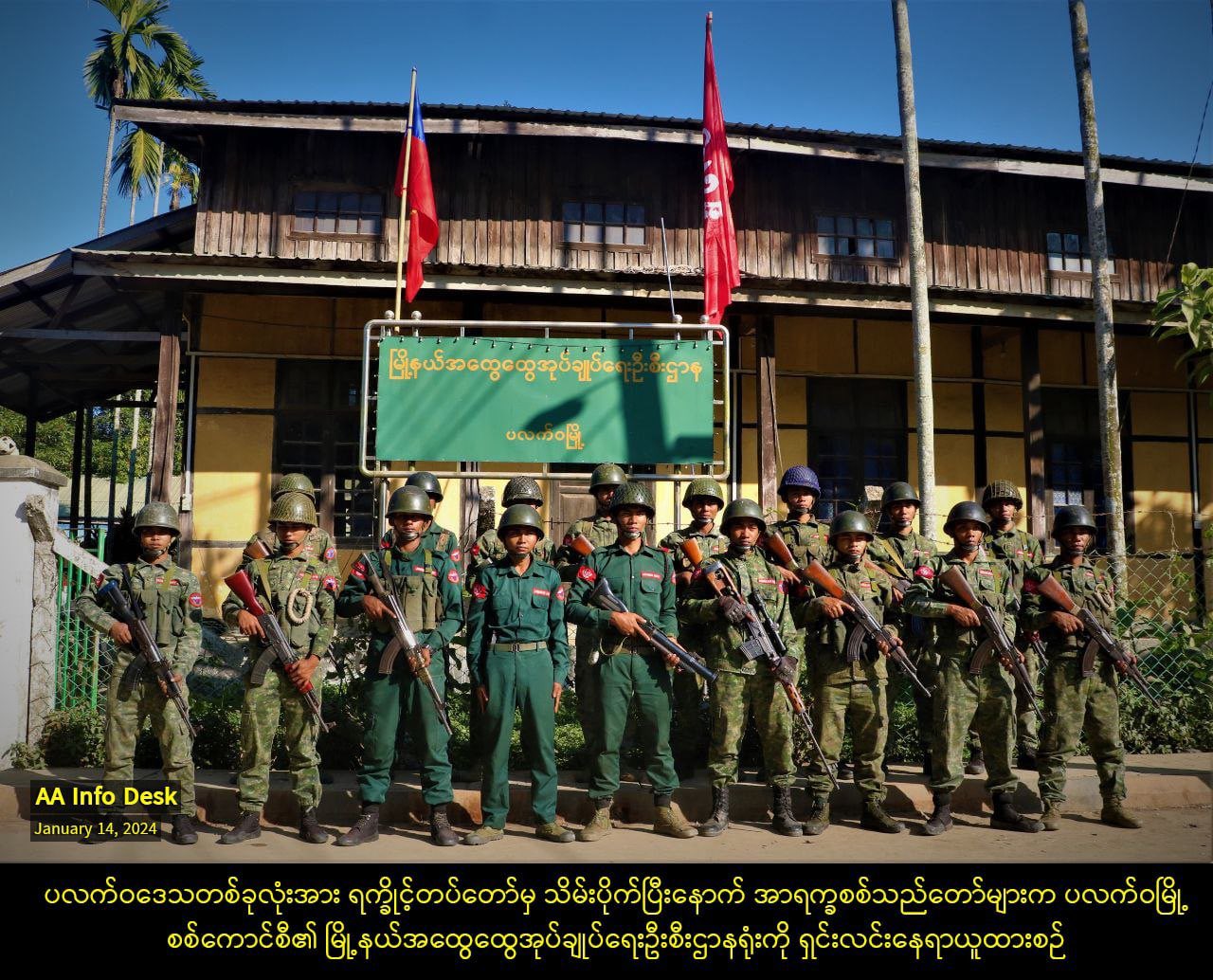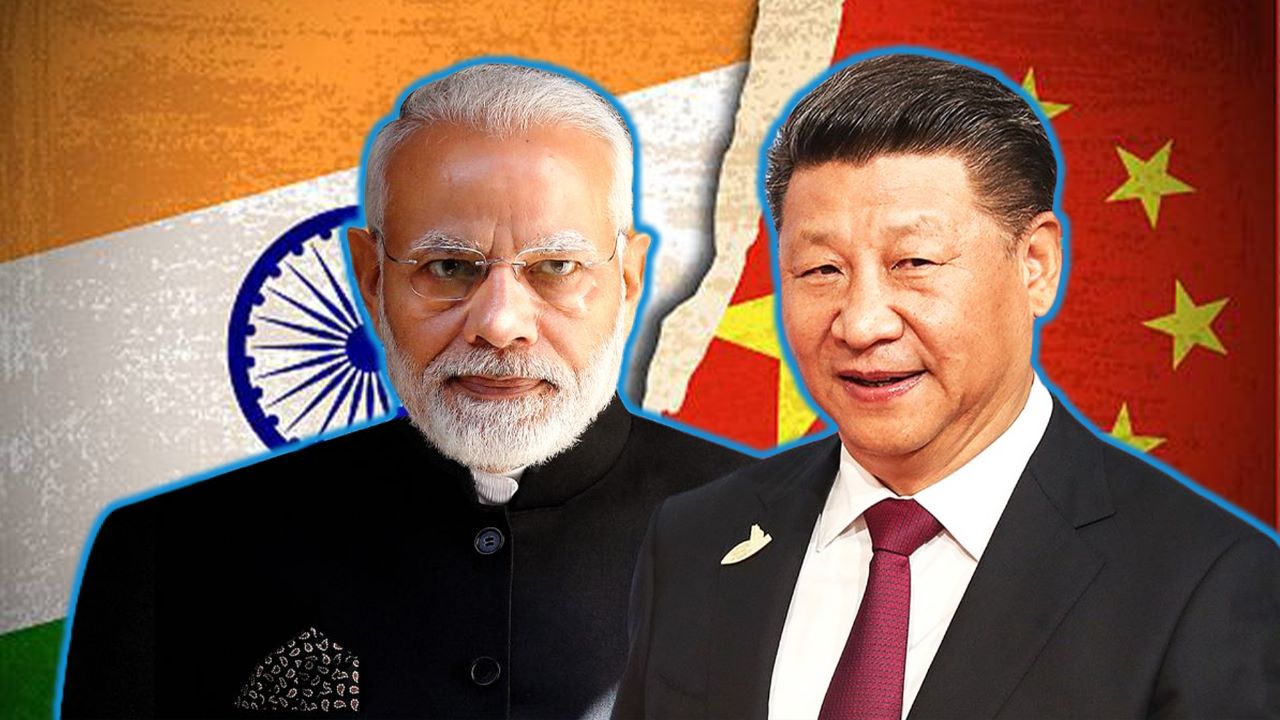Myanmar Rebels Puncture India’s Development of Sittwe Port; Experts Blame China-Backed Arakan Army
The Sittwe Port project, a key component of India’s regional connectivity initiative designed to bolster maritime connectivity between Myanmar and India, is now in limbo due to escalating conflict in Myanmar.
India funded and developed the strategic Sittwe Port, located at the Kaladan River estuary on the Arakan coast of Myanmar’s Rakhine state. Today, it is grappling with the aftermath of clashes between the Myanmar army and the Arakan Army (AA) rebels, hindering its operationalization.
Originally intended to enhance trade relations between the two countries, the port, developed under a $120-million project with an Indian line of credit, now finds itself at the forefront of a battle between the Myanmar military and Arakan Army (AA) rebels.
Sittwe Port, strategically located in the capital of Rakhine state, was envisioned as a crucial element in linking India’s Kolkata port with Myanmar’s maritime routes, promising to facilitate bilateral trade and regional economic growth.
However, recent developments in the region have cast a shadow over these aspirations.
The AA rebels, engaged in what they term a ‘revolutionary war’ against the junta, have made significant gains in the area. The fall of Paletwa and several key cities in western Myanmar to anti-junta resistance forces has exacerbated the situation.

The Arakan Army, an ethnic Rakhine ethnic armed organization (EAO), has systematically seized control of small towns surrounding Sittwe, cutting off crucial road and waterway access to the port city.
Of particular significance is the recent capture of Paletwa, a pivotal location in India’s Look/Act East Policy and a crucial juncture in the ambitious $484-million Kaladan Road Project.
The project, initiated in 2008, aims to establish a multi-modal transit transport route connecting Kolkata and Sittwe. What is more important is that the project’s expansion into Myanmar’s Chin State holds immense significance for India’s regional connectivity plans.
The project aims to provide an alternative route to India’s Northeast by linking Sittwe with Chin State through inland waterways, reducing dependence on the vulnerable Siliguri Corridor.
With the region’s instability hindering progress, the prospects of completing the envisioned infrastructure remain uncertain. In addition to its implications for India, the stalled Sittwe Port project has broader ramifications for regional connectivity.
The repercussions extend beyond India and Myanmar, impacting neighboring Bangladesh as well. The operationalization of Sittwe Port would have provided significant opportunities for Bangladesh, with its Teknaf Port located just 60 nautical miles away.
Is China Backing The Arakan Army?
Operating under the banner of the Brotherhood Alliance, a coalition formed between the armed wing of the National Unity Government (NUG), the People’s Defence Force (PDF), and three significant Ethnic Armed Organizations (EAOs) – the Arakan Army (AA), the Myanmar National Democratic Alliance Army (MNDAA), and the Ta’ang National Liberation Army (TNLA) – operations aimed at challenging the junta commenced in areas close to Myanmar’s international borders.
Since October 2023, Alliance forces, as part of Operation 1027, have successfully gained control of several strategically important townships near Myanmar’s borders with India, China, Bangladesh, and Thailand. The seizure of Paletwa by the Arakan Army on January 15 represents a significant milestone in the Alliance’s campaign.
Given Paletwa’s integral role in India’s infrastructure development efforts in eastern and northeastern India, particularly in the face of China’s influence in the region, there is a need to closely scrutinize the Arakan Army’s stance towards New Delhi.
A significant concern for India revolves around China’s reported backing of the brotherhood alliance, particularly in their pledge to safeguard Chinese investments in Myanmar. There are also indications that the Arakan Army is receiving substantial support, both financial and military, from China.
If confirmed, these reports raise worries in Delhi about Beijing’s potential use of armed factions to impede India’s infrastructure projects in Myanmar.
Additionally, the Arakan Army’s track record of targeting Indian-backed ventures like the Kaladan project while seemingly avoiding interference with Chinese endeavors in the region is often cited as evidence of its alignment with China’s strategic interests.
Previous incidents, including the abduction of Indian laborers at the Kaladan project site in response to joint military operations between India and Myanmar against the Arakan Army, as well as confrontations near the project area, highlight the nature of the Arakan Army’s actions.

Is India Encountering Nothing But Loss In Myanmar?
While recent developments have proven challenging for India’s strategic interests, there’s a silver lining as a major Indian private entity timely withdrew from Myanmar, thus mitigating potential losses.
In May 2019, Adani Ports and Special Economic Zone (Apsez) forged a 50-year agreement valued at $150 million to construct and manage a container terminal at Yangon Port.
This landmark deal represented a notable achievement as it marked the conglomerate’s first terminal venture beyond Indian borders and its second international port project after Australia, where Adani Australia owns and operates Abbot Point Terminal, which has been exporting Queensland coal.
Karan Adani, the CEO of Apsez and Gautam Adani’s son, championed the Myanmar project as “an ideal investment” for the group’s growth aspirations. He envisions an expansive container terminal network spanning Southeast Asia.
However, the venture faced adversity following General Min Aung Hlaing’s assumption of power in February 2021, which led to controversy and operational challenges in the wake of sanctions imposed by America on Myanmar Economic Corp. Ltd (MEC), a Burmese military-controlled company.

In May 2023, the Adani Group, led by billionaire Gautam Adani, concluded a deal to sell the Myanmar Port project to a local firm, Solar Energy, for $30 million. This figure is significantly lower—by $120 million—than the investment made in establishing the facility.
Adani had initially announced plans to exit Myanmar in October 2021, aiming to close the sale by the end of March 2022. However, the deal concluded a year later, highlighting the complexities of disengagement from the Myanmar venture amidst escalating political turmoil.
Despite encountering setbacks, this decision succeeded in protecting India’s crucial investment, which could have otherwise met a fate similar to India’s ambitious Sittwe Port project.

China’s Expanding Footprint In Myanmar
Meanwhile, China’s economic footprint along Myanmar’s Bay of Bengal coast has seen significant expansion. Beijing has activated oil and natural gas pipelines originating from the Shwe gas fields near Kyaukphyu in the Rakhine State, extending to Yunnan province in China.
In December 2023, China inked additional agreements with the Myanmar military to operationalize a deep-sea port and establish a special economic zone near Kyaukphyu.
Kyaukphyu Port is just one of several points in the region under Chinese control, including a naval base in Cambodia, Hambantota in Sri Lanka, Gwadar in Pakistan, and a naval station at the port of Djibouti.
Located on the north-western corner of Yanbye Island on Combermere Bay, 250 miles north-west of Yangon in Rakhine province, where the Myanmar military, better known as the Tatmadaw, is engaged in conflict with the Arakan Army, Kyaukphyu holds strategic significance.
The inception of plans for the Kyaukphyu Port and its accompanying Special Economic Zone (SEZ) traces back to 2010. However, the onset of the COVID-19 pandemic and the subsequent military takeover in 2021 disrupted the project’s timeline, causing substantial delays in the commencement of construction activities.
With an estimated value of $7.3 billion for the port project and an additional $1.3 billion allocated for the adjacent SEZ, the undertaking represents a substantial investment in the western state of Rakhine.
Spanning approximately 600 acres, the site holds strategic importance as it sits at the forefront of China’s ambitious regional connectivity plans.
Upon completion, China’s Kyaukphyu port project will serve as the new southern terminus of the 1,700-kilometer-long China-Myanmar Economic Corridor (CMEC), linking it to the Chinese city of Kunming.
This corridor holds immense significance as it provides landlocked Yunnan Province with direct access to the Indian Ocean, thereby opening up new trade routes and economic opportunities.
The project also serves as a strategic bypass for Chinese shipping, which will offer an alternative route to circumvent the congested Malacca Strait.
The Kyaukphyu port project will ease maritime congestion, facilitating smoother trade flows between China and key global markets in the Middle East, Africa, and Europe.
Despite the setbacks caused by the pandemic and political upheaval, the Kyaukphyu port project remains a cornerstone of China’s broader economic and geopolitical strategy in Southeast Asia.

